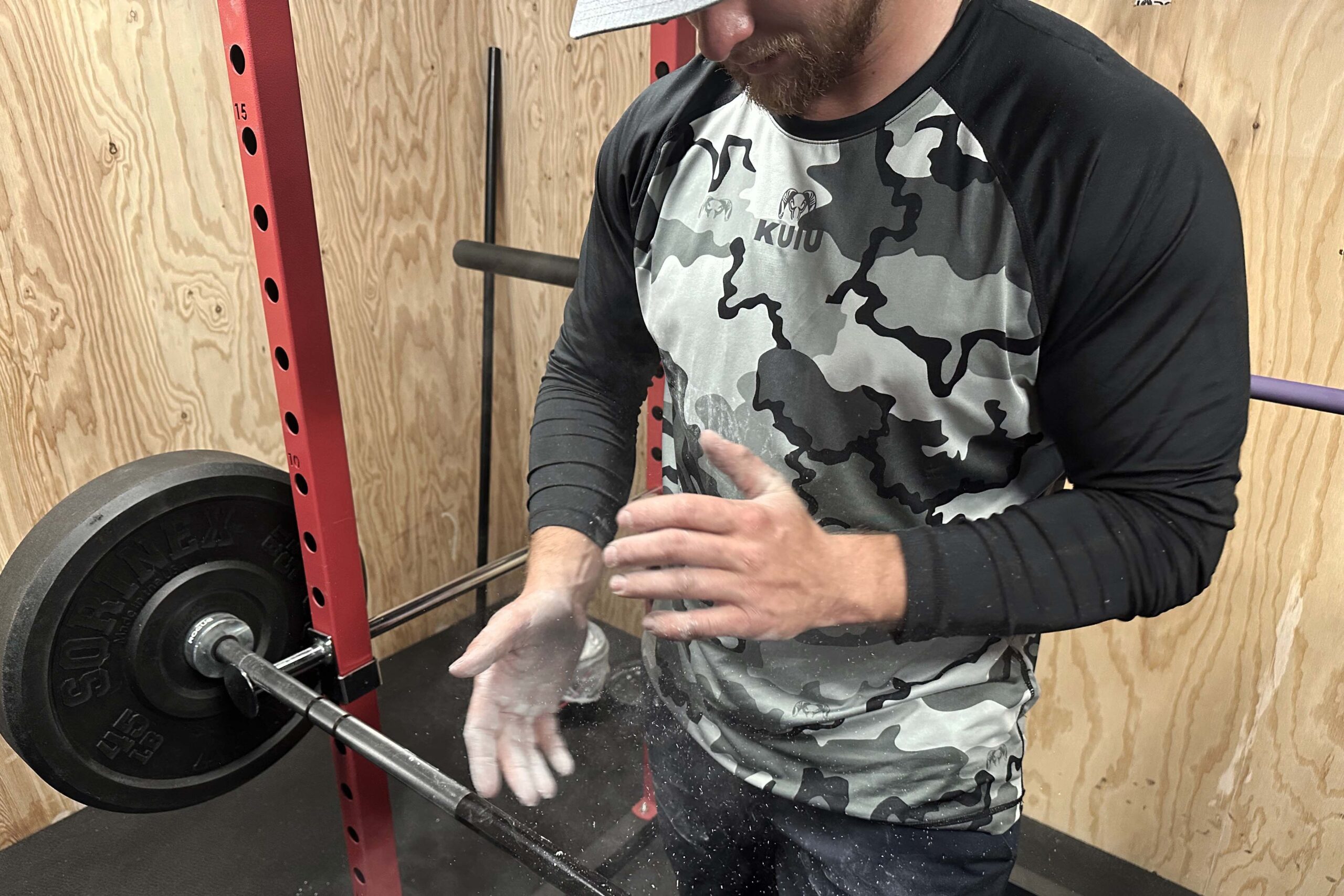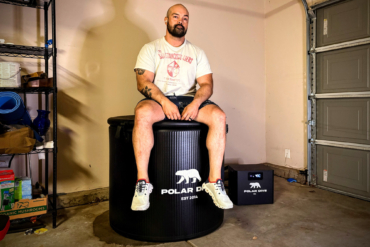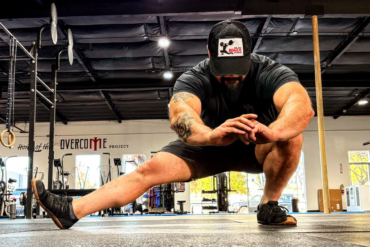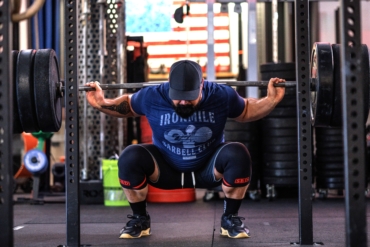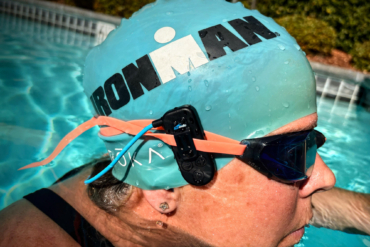Rucking is simply walking while carrying weight in a backpack. The term originates from the word “rucksack,” and we all know what that is. The military officially terms it “foot marches”; walking with weight is a primary activity to prepare for military entrance tests.
I’m a curmudgeon and scoffed at what seemed like a marketing ploy to create a fitness category to sell unnecessary gear. “Rucking” seemed like something I always did while pursuing “real” outdoor sports. I felt like I was always rucking when approaching climbs, hiking, or backpacking. Hell, I was rucking long before the term emerged while slogging under the load of all my textbooks in high school and college. (Remember books?)
Rucking pundits state that while hiking or backpacking is about the path and destination, rucking is purposefully marching only for physical training. I wasn’t going to argue semantics.
But I got assigned this article and got sent ruck-specific gear to test. And, to my utter surprise, I like it. Yes, it’s simple. That’s one of the beauties of this form of outdoor exercise. I also discovered many other benefits during my months-long deep dive into rucking.
To outdoor enthusiasts, explaining how to ruck seems unnecessary. But here it is in the simplest form: 1) get a rucksack or backpack, 2) fill it with weight, and 3) walk. That’s it! But along my neo-rucker journey, I’ve picked up a few tips to help you start your program smoothly.
5 Rucking Tips for Beginners
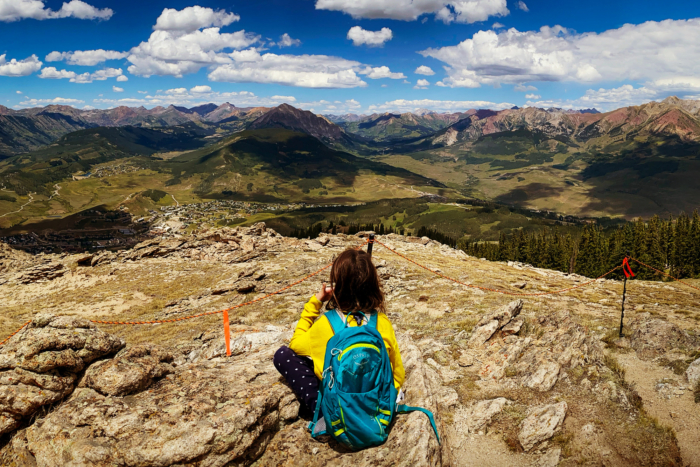
Although rucking seems so straightforward, these five tips can go a long way to increasing your enjoyment and consistency in this low-impact form of outdoor conditioning.
Start With Conservative Load, Duration, and Intensity
if you go into the internet hole around rucking, it can seem like the “sport” demands high loads and super-long distances. Many sites have a military vibe, with trim and fit soldier types marching up to 24 hours at a pop, in combat camo and boots, and it always seems to be raining and muddy. These images may make you think you need to load up 50+ pounds and suffer through ultra-long distances in the worst conditions to honor the activity.
But hold on there, Maverick. No amount of stoke or desire can overcome physiology. Although rucking is low-impact, it still presents new stresses to tissues. So it is best to adhere to one of the golden rules of training: gradual and consistent progression. Your Achilles, hamstring tendons, knees and articulating surfaces, and back muscles will thank you.
No set formula determines your starting weight or time/distance. For sedentary types just starting, 10 pounds could be enough, and 15 minutes might be the correct duration. Pay attention to how your body reacts to the new activity during and after your session for clues about how it’s responding.
It’s better to start conservatively, feel underworked initially, and improve than harboring a soft tissue injury and suffer the related time off and backsliding.
The intensity of rucking revolves around terrain and pace. And again, start conservatively to allow your tissues to adapt and become more durable against the specific forces of your new activity. A pace where breathing gets faster but not deeper, with the ability to converse, is a good place to start.
This intensity derives most of the energy from aerobic, fat-based metabolism. A solid base of this type of fitness is fundamental to building fitness for higher intensities of work later. Eventually, you may be running with the heavy load on your back.
Flat terrain should be your initial choice, then gradually and progressively add rolling, longer, and steeper hills. The weight on your back drastically increases the energy demand of walking uphill. And the downhills require eccentric (elongating muscle fibers under load instead of shortening) contractions, which require much muscular force generation and is the leading contributor to soreness and tissue disruption.
The impact forces of the foot landing on the ground are also greatly accentuated when moving downhill. So be especially careful as you progress into steeper terrain.
With consistency, your body will respond to gradual load, duration, and intensity progressions with improved tissue tolerance. The enhanced ability to handle physical stress, recover, and adapt will allow you to carry more weight for longer distances. Before you know it, you could be in combat fatigues, rucking for hours in the rain, smiling the entire time.
No, You Don’t Need a ‘Rucking’ Backpack
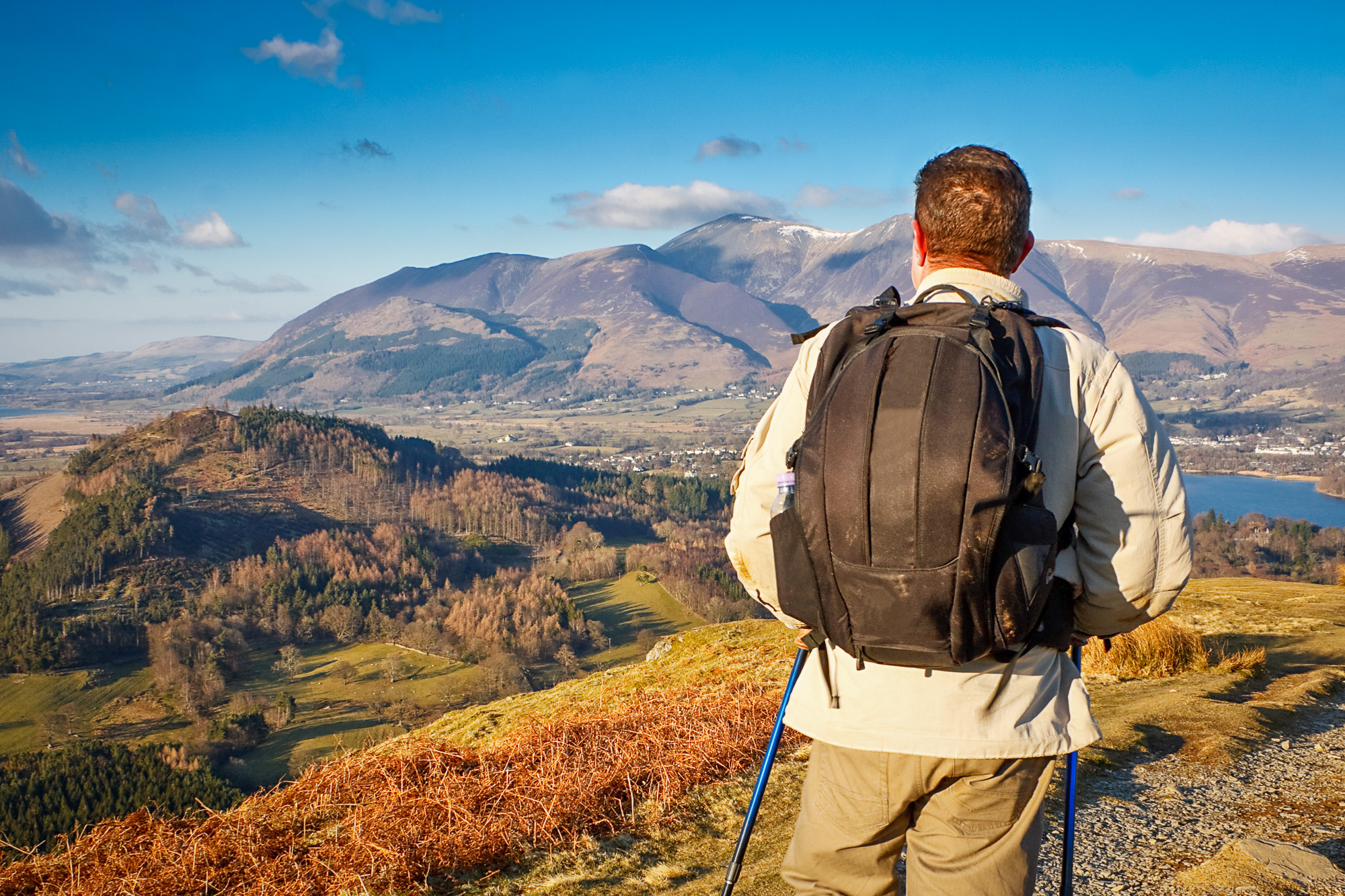
Don’t let a proposed equipment need to keep you from getting started. Any backpack, filled with anything with mass, will perform the primary function of providing resistive load.
It helps if the load stays as high and as close to your back as possible. This allows a tall posture and stability. Ruck-specific packs hold a flat weight against a back panel, providing an ideal configuration. But you can achieve similar results with intelligent choices and packing.
Bags filled with sand and covered in duct tape are a DIY option that feels comfortable. Depending on the bag’s dimensions and backpack characteristics, a pillow or foam pool noodles can occupy the space at the bottom of the pack to keep the load high.
If you partake in other outdoor activities, carry the pack you use for that with the gear. When I started, I just schlepped my crag pack with the usual sport climbing gear, water, etc., and it felt fine. The same could be said for an overnight backpacking setup.
If you continue rucking as a regular part of your routine, a rucking pack may be worth it. I vehemently believed that I had everything I needed due to my other outdoor activities. But when I tried a rucking-specific pack and weight plates, I had to admit it was better.
The weight was right against my upper back, allowing me to stand tall while walking. And the flat weight plates, nestled in their correctly sized pockets, never budged. Finally, changing loads was quick and easy, and the loads were accurately measured.
Use Supportive Footwear

The added load of rucking increases the impact forces and momentum of your footstrike immensely. And, as mentioned above, hills add to these loads your lower legs and feet must absorb.
Yes, ultralight, minimalist shoes can feel great with just body weight. But with your rucksack and potentially rough terrain, I suggest more supportive footwear to protect against injury and discomfort.
Trail running shoes and lighter trail shoes make the most sense given the additional loads of rucking. And fit is king; the additional forces of rucking can turn niggling discomfort into a much bigger deal. Rucking has garnered so much attention that there are specific rucking shoes, although the differences between them and trail running or light hikers seem minimal.
As you progress in your rucking journey, your intrinsic foot and lower leg muscles will adapt, as will all the associated supportive soft tissues. You may be able to move into lighter and less structured shoes. But give your body a chance to adapt before you go all minimalist to avoid potential long-term injury.
Foot injuries are among the hardest to recover from due to the constant need to be on our feet and the location at the bottom of our bodies. These make swelling a much more pesky thing to address.
Maintain Correct Posture
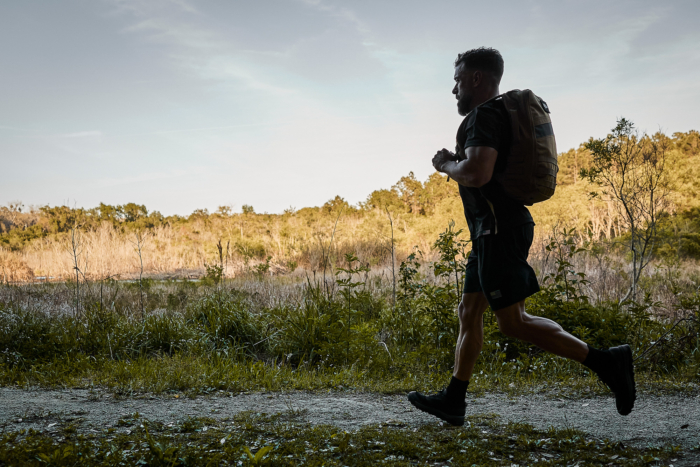
To protect the spine and maintain or even gain correct posture, you should “stand tall” when rucking. Your vertebrae should be correctly stacked on top of one another, even with the load on your back. And your hips should open up when your leg passes under your pelvis.
A rucking pack or correctly loaded backpack greatly enhances and even forces this correct posture. Having the load high on your back, as close to your back as possible, aids in keeping the upper and cervical spine correctly aligned.
Avoid raising your shoulder girdle; keep your shoulders out of your ears. Having a load pressing down on shoulder straps can coerce you into almost unconsciously contracting your traps and other related muscles.
However, a properly fitting and loaded pack and a correctly tensioned sternum strap will nearly make proper posture while rucking automatically. I found that if something in my shoulder girdle was getting tight while rucking with a correctly loaded and fitted pack, it was my fault.
Despite what my years of outdoor experience assumed, I didn’t need a waist strap. When the load was right on my back and high, I didn’t at all feel the need to have a hip belt take some of the weight. I felt that the load was already spread out along the length of my trunk, with my spine stacked, and everything was comfortable. I felt like a hip belt was unnecessary and possibly a deterrent in maintaining correct posture.
Work Rucking Into Other Daily Activities
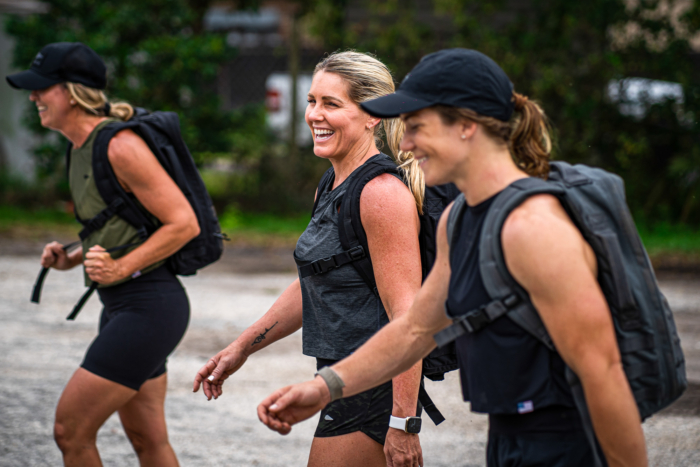
At first, I headed out the door each day on a specific rucking mission. But one day, it occurred to me that I was just walking. So I started getting bonus rucking time doing all sorts of daily tasks.
I started wearing my pack while walking my dog, mowing my lawn, walking up the driveway to get packages and mail, and even just walking around my house. I wore my pack at a standing desk and looked like some paramilitary nut case.
But guess what? I got fitter, faster. It was apparent that the additional time under load was giving me “free” progression. I have not worn a pack while grocery shopping yet, but I bet I will soon.
I live in the country, but an urban dweller has even more opportunities to use this bonus rucking time. All the daily tasks, especially for a mobile worker, could be used as training time.
I can see putting a rucking plate or additional weight in a computer backpack, and walking to and from a coffee shop or parking garage (avoiding the elevator) as healthy multitasking. Rucking can also serve as a community-building and social activity; many rucking clubs, events, and meetups exist.
Final Thoughts on Rucking for Beginners
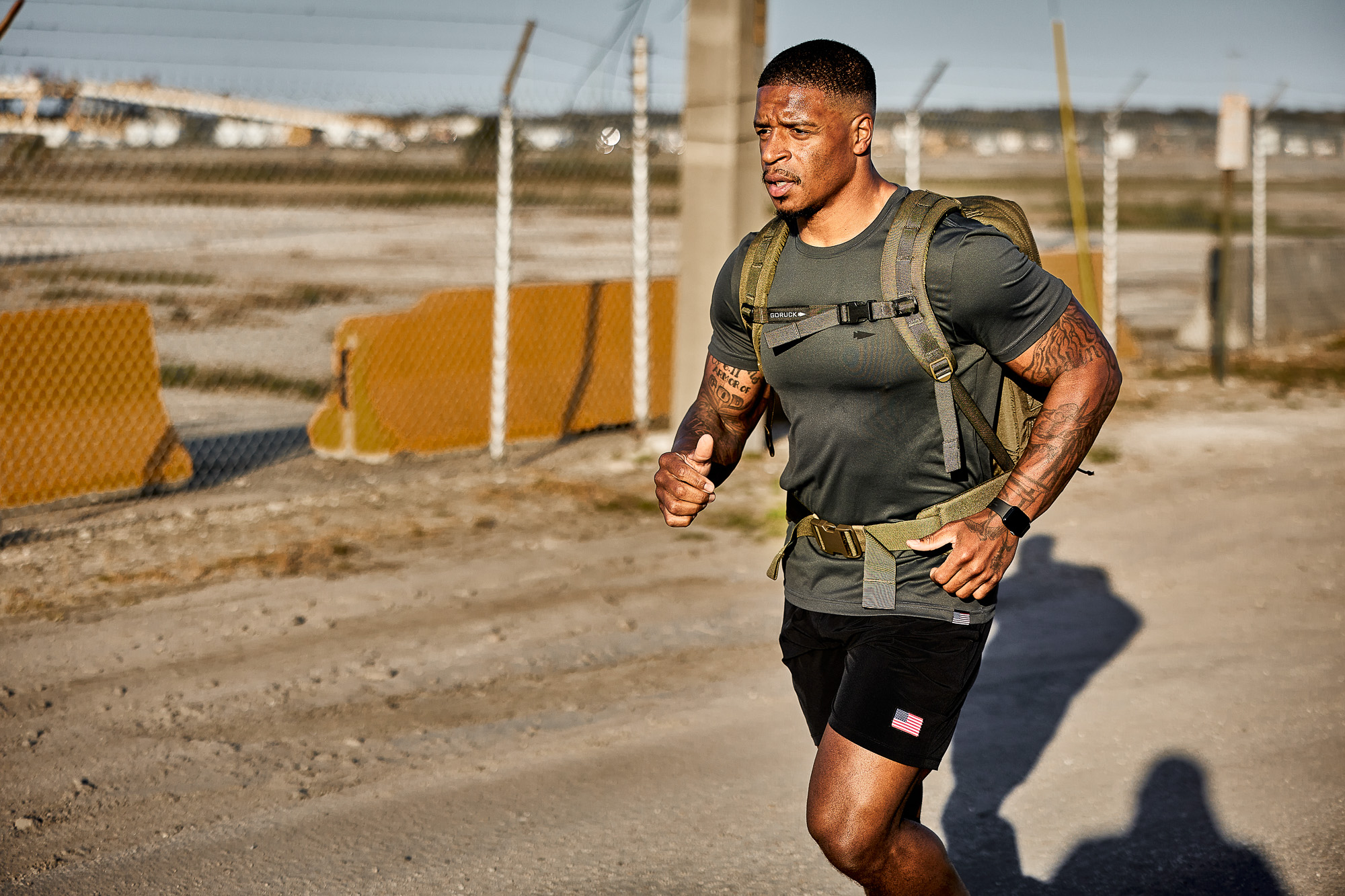
If you’re a grouch like me, maybe you’ve thought about the term “rucking” similarly to I did. But I was wrong.
Rucking is a legitimate exercise that combines cardiopulmonary training with resistive load. It’s low impact and gets you into an upright posture (when you might spend most of the day sitting, hips closed, hunched over a computer). And it gets you outside, in the clean air and sunshine, doing a natural activity that leaves room for thinking or the space not to think.
So, give it a shot. The simple activity of rucking might lead you to health and happiness.

